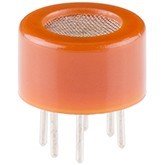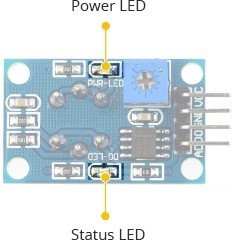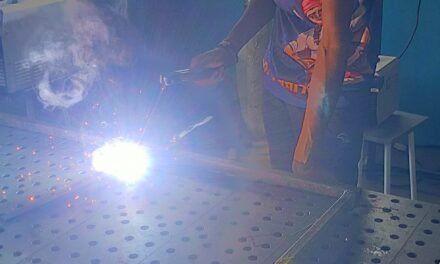AIM : to make alchole sensor with Arduino an d interface it with Arduino
HOW DOES A ALCHOLE SENSOR WORKS :
How MQ3 Alcohol Sensor Works? & Interface it with Arduino
Give your next Arduino project a nose for alcohol with the MQ3 alcohol sensor module. This sensor detects the presence and the concentration of alcohol present in the air. So, if you are planning to make your own breathalyzer to measure the amount of alcohol in the human body, the MQ3 alcohol sensor module is a great option.
MQ3 Alcohol Sensor
MQ3 is one of the most commonly used sensors in the MQ sensor series. It is a Metal Oxide Semiconductor (MOS) type of sensor. Metal oxide sensors are also known as Chemiresistors, because sensing is based on the change of resistance of the sensing material when exposed to alcohol. So by placing it in a simple voltage divider network, alcohol concentrations can be detected.

MQ3 alcohol sensor works on 5V DC and draws around 800mW. It can detect Alcohol concentrations anywhere from 25 to 500 ppm.
What is 1 ppm equal to?
When measuring gases, the term concentration is used to describe the amount of gas by volume in the air. The two most common units of measurement are parts-per-million, and percent concentration.
Parts-per-million (abbreviated ppm) is the ratio of one gas to another. For example, 500ppm of alcohol means that if you could count a million gas molecules, 500 of them would be of alcohol and 999500 molecules would be some other gases.
Here are the complete specifications
| Operating voltage | 5V |
| Load resistance | 200 KΩ |
| Heater resistance | 33Ω ± 5% |
| Heating consumption | <800mw |
| Sensing Resistance | 1 MΩ – 8 MΩ |
| Concentration Scope | 25 – 500 ppm |
| Preheat Time | Over 24 hour |
Internal structure of MQ3 Alcohol Sensor
MQ3 is a heater-driven sensor. That’s why it is enclosed in two layers of fine stainless steel mesh called an Anti-explosion network. It ensures that heater element inside the sensor will not cause an explosion, as we are sensing flammable gas (alcohol).

It also provides protection for the sensor and filters out suspended particles so that only gaseous elements are able to pass inside the chamber.
This is what the sensor looks like when outer mesh is removed. The star-shaped structure is formed by the sensing element and six connecting legs that extend beyond the Bakelite base. Out of six, two leads (H) are responsible for heating the sensing element and are connected via a Nickel-Chromium coil ( a well known conductive alloy).
The remaining four leads (A & B) responsible for output signals are connected using Platinum Wires. These wires are connected to the body of the sensing element and convey small changes in the current that passes through the sensing element.
The tubular sensing element is made up of Aluminum Oxide (AL2O3) based ceramic and has a coating of Tin Dioxide (SnO2). The Tin Dioxide is the most important material being sensitive towards alcohol. However, the ceramic substrate only increases the heating efficiency and ensures that the sensor area is continuously heated to the working temperature.
So, to summarize, the Nickel-Chromium coil and Aluminum Oxide based ceramic forms a Heating System; while Platinum wires and coating of Tin Dioxide forms a Sensing System.
How MQ3 Alcohol Sensor Works?
When SnO2 semiconductor layer is heated at high temperature, oxygen is adsorbed on the surface. In clean air, electrons from the conduction band in tin dioxide are attracted to oxygen molecules. This form an electron depletion layer just below the surface of SnO2 particles and forms a potential barrier. As a result, the SnO2 film becomes highly resistive and prevents electric current flow.
In the presence of alcohol, however, the surface density of adsorbed oxygen decreases as it reacts with the alcohols; which lowers the potential barrier. Electrons are then released into the tin dioxide, allowing current to flow freely through the sensor.
MQ3 Alcohol Sensor Module Hardware Overview
Since the MQ3 alcohol sensor is not breadboard compatible, we recommend this handy little breakout board. It’s very easy to use and comes with two different outputs. It not only provides a binary indication of the presence of alcohol but also an analog representation of its concentration in air.
The analog output voltage provided by the sensor (at AO pin) varies in proportion to the alcohol concentration. The higher the alcohol concentration in the air, the higher the output voltage; Whereas lower concentration gives lower output voltage. The following animation shows the relationship between alcohol concentration and output voltage.
The same analog signal is fed to a LM393 High Precision Comparator to digitize it and is made available at the Digital Output (DO) pin.
The module has a built-in potentiometer for adjusting the sensitivity of the digital output (DO). You can use it to set a threshold; so that when the alcohol concentration exceeds the threshold value, the module will output LOW otherwise HIGH.
This setup is very useful when you want to trigger an action when certain threshold is reached. For example, when the alcohol concentration in the breath exceed a threshold, you can tell if someone is drunk. You got the idea!
Tip:
Rotate the knob clockwise to increase sensitivity and counterclockwise to decrease it.
Apart from this, the module has two LEDs. The Power LED will light up when the module is powered. The Status LED will light up when the digital output goes LOW.
MQ3 Alcohol Sensor Module Pinout
Now let’s have a look at the pinout.

VCC supplies power for the module. You can connect it to 5V output from your Arduino.
GND is the Ground Pin and needs to be connected to GND pin on the Arduino.
D0 provides a digital representation of the presence of alcohol.
A0 provides analog output voltage in proportional to the concentration of alcohol.
Measuring alcohol concentration using Analog Output
As you know that the module provides both analog and digital output, so for our first experiment we will measure the alcohol concentration by reading the analog output.
Wiring
Let’s hook the MQ3 alcohol sensor up to the Arduino.
Start by connecting VCC pin to the 5V pin on the Arduino and connect GND pin to the Ground pin on the Arduino. Finally, connect AO output pin on the module to Analog pin#0 on the Arduino.
The following illustration shows the wiring.
THE FINAL CODE FOR THIS PROJECT:
/* Change these values based on your calibration values */
#define Sober 120// Define max value that we consider sober
#define Drunk 400// Define min value that we consider drunk
#define MQ3pin 0 floatsensorValue;//variable to store sensor value
voidsetup() {
Serial.begin(9600);// sets the serial port to 9600
Serial.println("MQ3 warming up!");
delay(20000);// allow the MQ3 to warm up
} voidloop() {
sensorValue =analogRead(MQ3pin);// read analog input pin 0
Serial.print("Sensor Value: ");
Serial.print(sensorValue);
// Determine the status
if(sensorValue < Sober) {
Serial.println(" | Status: Stone Cold Sober");
}elseif(sensorValue >= Sober && sensorValue < Drunk) {
Serial.println(" | Status: Drinking but within legal limits");
}else{
Serial.println(" | Status: DRUNK");
} delay(2000);// wait 2s for next reading
}TO MAKE THE CASING FOR THIS PROJECT :
- Head over to casemaker for laser cutter on the web
- And there just put in the desired values for the case as you do that the bpox dimensions will change
- Once you are satisfied with the design
- Add fingers to it so that it may fit well
- Download the file in SVG file format and you are done
Just cut it then
Note : for more detailed information on the laser cutting head over to my blog on the laser cutter



